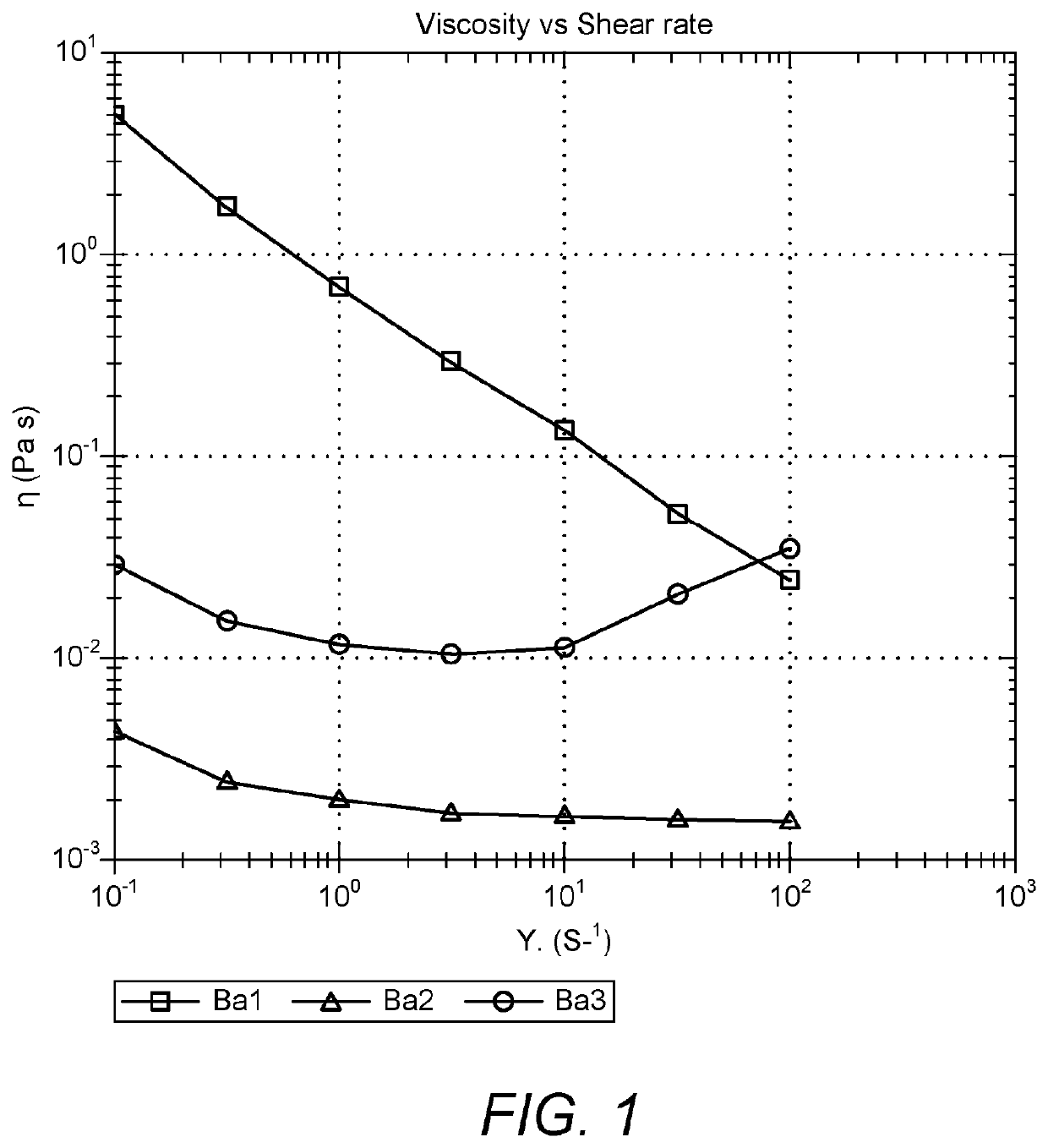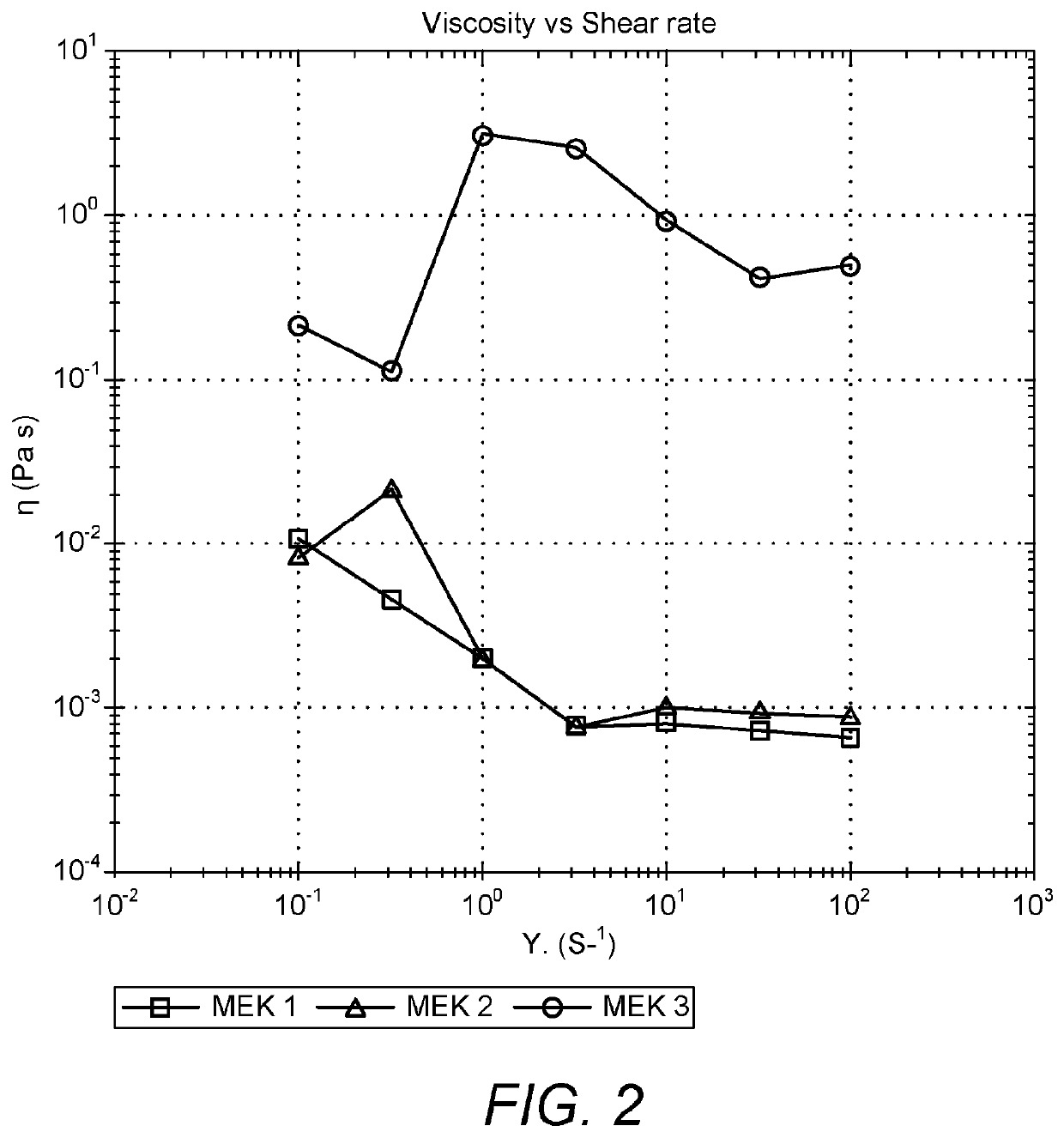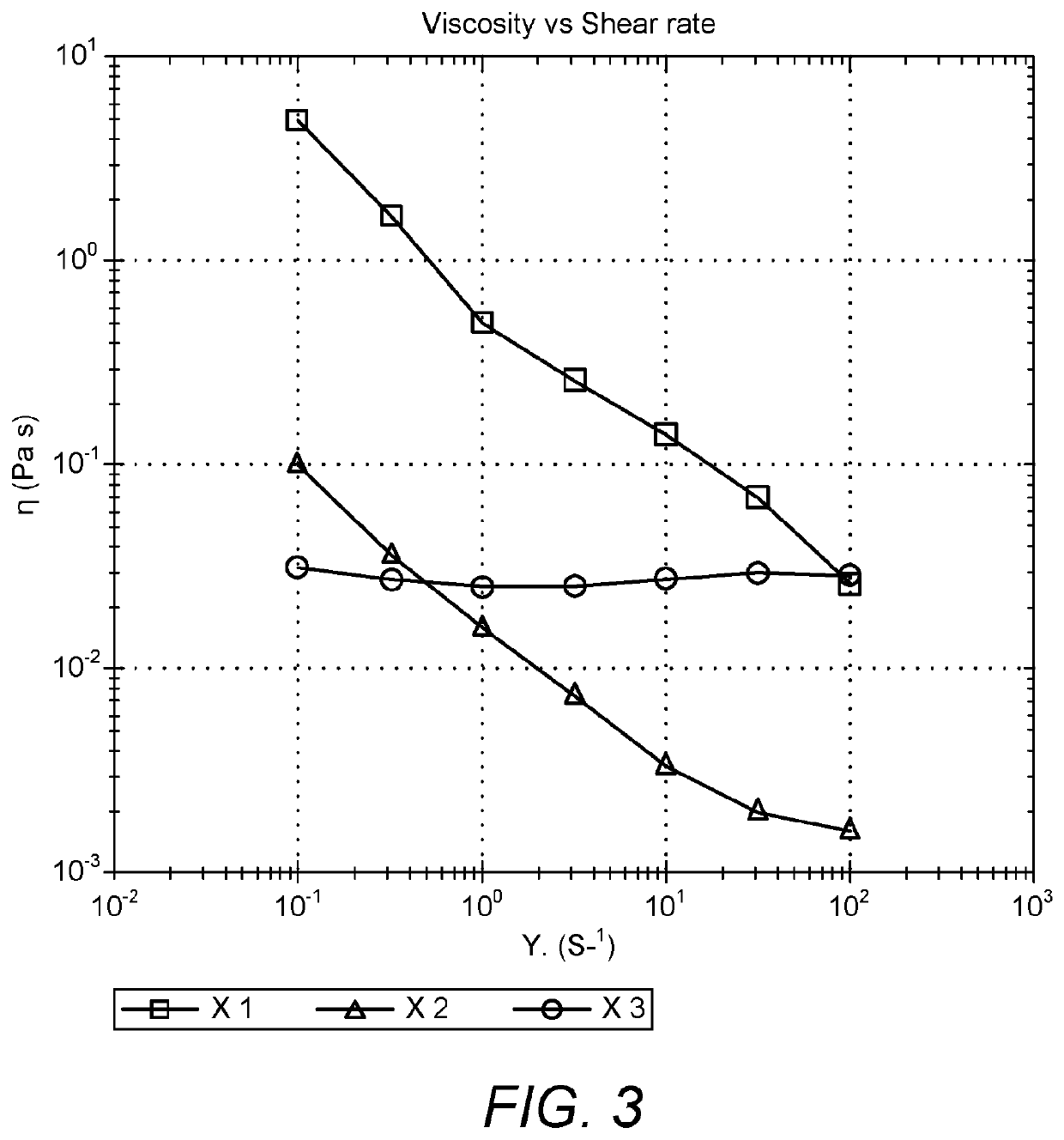Dispersions
- Summary
- Abstract
- Description
- Claims
- Application Information
AI Technical Summary
Benefits of technology
Problems solved by technology
Method used
Image
Examples
example 1
n of Graphitic Material A-GNP10 in Butyl Acetate
[0061]Samples of dispersions referenced as BA1 to BA3 were made up including graphitic material A-GNP10 and butyl acetate as shown in Table 1.
TABLE 1Graphene / SampleGraphiticReferencematerialGrinding resinWetting agentSolventBA110 wt % AGNP-10——Butyl acetateBA210 wt % AGNP-10—DISPERBYK-2150Butyl acetateBA310 wt % AGNP-10Laropal A81—Butyl acetate
[0062]Graphitic material A-GNP10 is commercially available from Applied Graphene Materials UK Limited, UK and comprises graphite nanoplatelets of between 25 and 35 layers of atoms thick. The graphite nanoplatelets are supplied as a powder and are generally aggregated into clumps of nanoplatelets.
[0063]Each of samples BA1 to BA3 was made up using the following steps:
1 To the butyl acetate any grinding resin and or wetting agent present in the sample was added. This was stirred until any solids were dissolved and the mixture was substantially homogenous;
2 The 10 wt % of AGNP-10 was calculated on th...
example 2
n of Graphitic Material A-GNP10 in Methyl Ethyl Ketone
[0066]Samples of dispersions referenced as MEK1 to MEK3 were made up including graphitic material A-GNP10 and methyl ethyl ketone as shown in Table 6.
TABLE 6Graphene / SampleGraphiticReferencematerialGrinding resinWetting agentSolventΛΛEK110 wt % AGNP-10——Methyl ethylketoneMEK210 wt % AGNP-10—DISPERBYK-2150Methyl ethylketoneMEK310 wt % AGNP-10Laropal A81—Methyl ethylketone
[0067]Each of samples MEK1 to MEK3 was made up using the same steps as used in connection with samples BA1 to BA3 as set out above.
TABLE 7Particle Size Distribution of MEK DispersionsSampleParticle Size Distribution (μm)ReferenceGNP TypeD × 10D × 50D × 90MEK1A-GNP100.3883.0313.2MEK2A-GNP100.282.6612.9MEK3A-GNP100.627.7517.7
TABLE 8Viscosity of MEK Dispersions measured on manufacture at a shearrate ({dot over (γ)}) of 10 s−1 at 23° C.SampleInitial ViscosityReferenceGNP Type(Pa · s)MEK1A-GNP100.000826MEK2A-GNP100.00104MEK3A-GNP100.9375
[0068]FIG. 2 provides a graph sh...
example 3
n of Graphitic Material A-GNP10 in Xylene
[0070]Samples of dispersions referenced as X1 to X3 were made up including graphitic material A-GNP10 and xylene as shown in Table 11.
TABLE 11Graphene / SampleGraphiticReferencematerialGrinding resinWetting agentSolventX110 wt % AGNP-10——XyleneX210 wt % AGNP-10—DISPERBYK-2150XyleneX310 wt % AGNP-10Laropal A81—Xylene
[0071]Each of samples X1 to X3 was made up using the same steps as used in connection with samples BA1 to BA3 as set out above.
TABLE 12Particle Size Distribution of Xylene DispersionsSampleParticle Size Distribution (μm)ReferenceGNP TypeD × 10D × 50D × 90X1A-GNP101.052.366.67X2A-GNP100.433.6114.4X3A-GNP100.943.1315.3
TABLE 13Viscosity of MEK Dispersions measured on manufacture at a shearrate ({dot over (γ)}) of 10 s−1 at 23° C.SampleInitial ViscosityReferenceGNP Type(Pa.s)X1A-GNP100.1453X2A-GNP100.00337X3A-GNP100.2846
[0072]FIG. 3 provides a graph showing the relationship between viscosity and shear rate for samples X1 to X3 of table 1...
PUM
 Login to View More
Login to View More Abstract
Description
Claims
Application Information
 Login to View More
Login to View More - R&D
- Intellectual Property
- Life Sciences
- Materials
- Tech Scout
- Unparalleled Data Quality
- Higher Quality Content
- 60% Fewer Hallucinations
Browse by: Latest US Patents, China's latest patents, Technical Efficacy Thesaurus, Application Domain, Technology Topic, Popular Technical Reports.
© 2025 PatSnap. All rights reserved.Legal|Privacy policy|Modern Slavery Act Transparency Statement|Sitemap|About US| Contact US: help@patsnap.com



